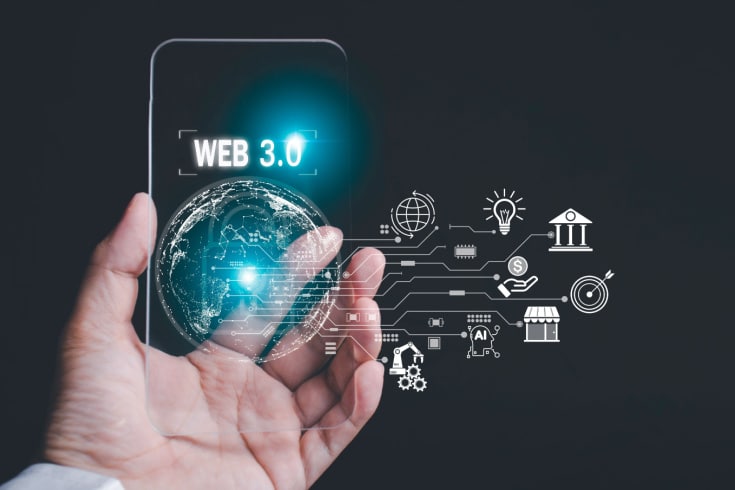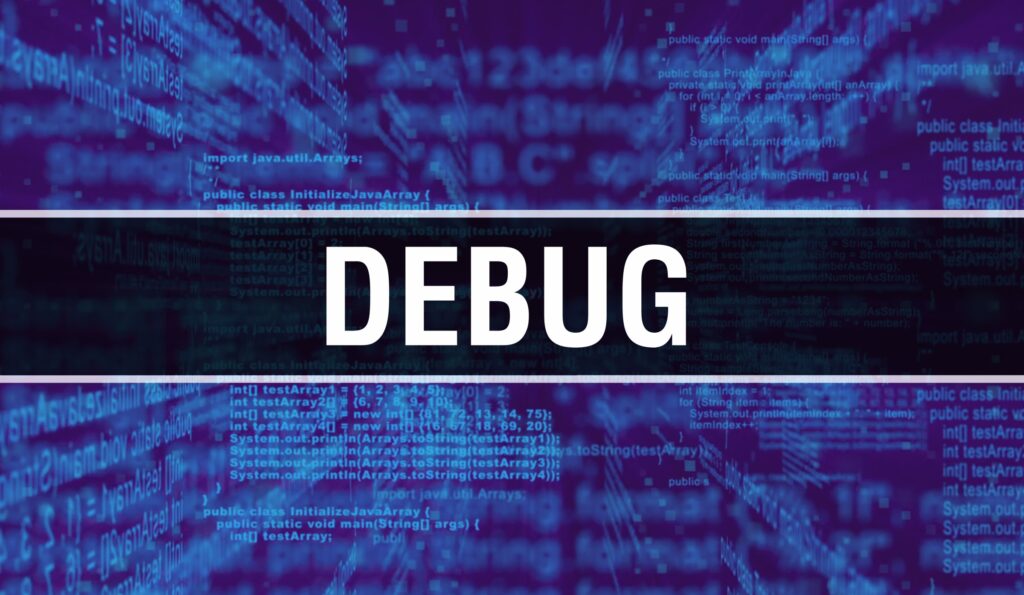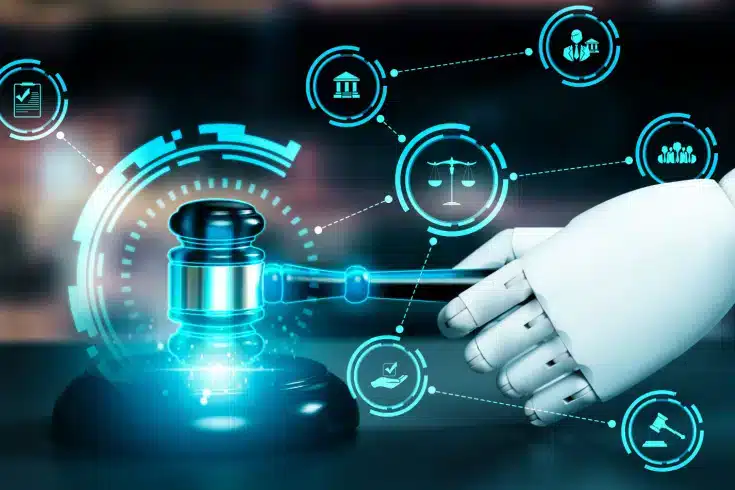Web3 Legal Framework: Key Points for Businesses Entering the Space Explained

Web3 refers to a decentralized internet that leverages blockchain technology, and it is gaining attention as the next generation of the internet that could replace the centralized Web2.0. To enter the Web3-related business, it is crucial to understand the wide range of legal challenges, including privacy, security, and intellectual property rights, and to address these challenges correctly.
This article focuses on the legal aspects of Web3, providing a detailed explanation of the laws surrounding Web3 and the key points that entering companies should be aware of.
Web3 and the Law
Web3 (Web3.0) refers to a period in the evolving history of the World Wide Web, and it was first coined by Gavin Wood, a co-founder of Ethereum (a blockchain platform), in 2014 to describe a “decentralized online ecosystem based on blockchain technology.”
The main trend technologies in the Web3 space include crypto assets, NFTs (Non-Fungible Tokens), DeFi (Decentralized Finance), DAOs (Decentralized Autonomous Organizations), the metaverse, and Social Tokens. Web3 is considered the next generation of web technology, legal frameworks, and payment infrastructures.
In contrast, Web 1.0, which spanned from around 1991 to 2004, was personalityized by static content websites and a “one-way” communication style.
Web 2.0, based on the concept of the web as a platform, centers around user-generated content uploaded to forums, social media platforms like SNS, blogs, and wikis. It is known for its “two-way” interactive nature and is thought to have started around 2004 and continues to the present day.
Web3 further evolves from Web1.0 and Web2.0, offering the advantage of allowing individuals to manage and transact their data and content independently.
Web3 currently requires legal frameworks to be established. This article will explain the relevant laws as they stand today.
Legal Regulations Related to Web3

The American venture capital firm Andreessen Horowitz announced on January 22, 2022, a set of 10 principles intended to benefit society through the adoption of Web3.
These 10 principles serve as a guideline for governments worldwide to promote the spread of Web3. In Japan, the “Web3 White Paper[ja]” was published in April 2023. As of the time of writing, the following six legal regulations related to Web3 can be identified:
Laws Pertaining to Crypto Assets (Crypto assets)
Currently, crypto assets (crypto assets) are primarily regulated under the following three Japanese laws:
- Payment Services Act
- Financial Instruments and Exchange Act
- Financial Services Agency Act (Financial Products Sales Act)
Payment Services Act
The history of crypto assets (virtual assets) began with the birth of Bitcoin in 2009. At that time, there was insufficient legal framework in place, leading to speculative trading, hacking incidents, and ICO scams occurring around the world.
In response, crypto assets were added to the Payment Services Act in 2017 (the world’s first crypto assets law), and amendments to the Financial Instruments and Exchange Act and the Financial Services Provision Act (Financial Products Sales Law) were advanced in 2021, providing a certain level of investor protection.
The main points of the Payment Services Act are as follows:
(Enacted in 2017)
- Registration system for crypto assets exchange service providers (crypto assets exchanges)
(Amended in 2020)
- Registration system for custody service providers (specialized in the storage and management of crypto assets)
- Name change from virtual assets to crypto assets
- Enhanced protection of customer assets
- Pre-notification system for crypto assets handled
- Regulations on advertising and solicitation
- Regulation of ICOs
(Amended in 2023)
- Regulation of stablecoins
Below, we will explain each point in detail.
- Registration system for crypto assets exchange service providers (crypto assets exchanges)
The Payment Services Act defines crypto assets as one of the means of payment that is not legal tender and has established a registration system for crypto assets exchange service providers (crypto assets exchanges).
A framework for investor protection has also been established, including obligations for account openers to verify their identity, separate management of customer assets and service provider assets, and provision of information to customers.
- Registration system for custody service providers (specialized in the storage and management of crypto assets)
The 2020 amendment to the law made custody service providers (crypto assets management service providers) subject to registration as part of anti-money laundering and counter-terrorism financing measures, imposing the same obligations as those on crypto assets exchange service providers (crypto assets exchanges).
- Enhanced protection of customer assets
Under the Payment Services Act of 2017, customer deposits were to be managed in separate bank accounts or through monetary trusts, but the 2020 amendment mandated the use of trust banks or trust companies. Furthermore, customers’ crypto assets must be managed using reliable methods such as cold wallets (offline), and if managed with hot wallets (online), it is mandatory to hold a commensurate amount of compensation funds.
- Pre-notification system for crypto assets handled
The 2020 amendment introduced a pre-notification system for crypto assets handled by exchanges to prevent illegal transactions of crypto assets with high anonymity, which could become hotbeds for money laundering.
- Regulations on advertising and solicitation
The 2020 amendment also added regulations on advertising and solicitation, prohibiting false representations, exaggerated advertising, and advertisements or solicitations that encourage speculation.
- Regulation of ICOs
While the Payment Services Act of 2017 did not anticipate ICOs (Initial Coin Offerings), the 2020 amendment established regulations for ICOs.
Financial Instruments and Exchange Act
The amendment to the Financial Instruments and Exchange Act, which came into effect in 2021, has established regulations concerning crypto assets derivatives trading and Security Token Offerings (STOs).
The main points of the Financial Instruments and Exchange Act are as follows:
- Regulation of crypto assets derivatives trading
- Regulations related to STOs
- Prohibition of spreading rumors and market manipulation
- Stablecoin regulations
Below, we will explain each point in detail.
- Regulation of crypto assets derivatives trading
Derivative transactions using crypto assets as underlying assets have been added, requiring registration as a Type I Japanese Financial Instruments Business Operator. The maximum leverage ratio for margin trading has also been regulated to a maximum of twice for individuals.
- Establishment of regulations related to STOs
An STO (Security Token Offering) refers to the method of issuing securities as digital tokens to raise funds. The amended law has introduced the concept of “electronic recorded transferable rights,” which will be explained in more detail later, to clarify the rules for STOs.
Platforms handling STOs must be registered as Type I Japanese Financial Instruments Business Operators. However, if a general business operator issues “electronic recorded transferable rights” and solicits acquisitions without going through a platform, they will need to register as a Type II Japanese Financial Instruments Business Operator.
If certain conditions are met (public offering to more than 50 people or total issuance amount exceeding 100 million yen), it is mandatory to submit a “Securities Notification Form” and create a prospectus, as well as submit a “Securities Report” for each fiscal year.
- Prohibition of spreading rumors and market manipulation
In crypto assets trading, unfair practices such as spreading rumors and market manipulation have been prohibited due to rampant price manipulation.
- Stablecoin regulations
Stablecoins are a new type of digital coin designed to maintain a stable price using blockchain technology.
There are “collateralized” stablecoins, which are designed to be pegged to the price of specific assets such as legal tender, other crypto assets, or commodities (stable resources like gold or oil), and “non-collateralized” stablecoins, which use algorithms to maintain price stability.
In May 2023, the non-collateralized Korean stablecoin “Terra” decoupled from the US dollar, resulting in a crash of over 99%. In response, there has been a global call for increased regulation of the risks associated with stablecoins.
In Japan, from June 2023, amendments to the law have made it possible for banks, trust companies, and funds transfer service providers to issue stablecoins backed by legal tender. Meanwhile, the consideration of a Central Bank Digital Currency (CBDC) is also underway.
Financial Services Provision Act (Japanese Financial Instruments and Exchange Act)
The Financial Instruments and Exchange Act was established in 2000, but it was renamed to the Financial Services Provision Act following the legal revisions in 2021.
The main amendments are as follows:
(November 2021 Amendment)
- Regulation of crypto assets transactions and crypto assets derivatives trading
- Registration system for financial services intermediaries
- Obligation to explain important matters and liability for damages
- Establishment of Certified Financial Services Intermediaries Associations and designated Alternative Dispute Resolution (ADR) organizations
Below, we will explain each of the amendments in detail.
- Regulation of crypto assets transactions and crypto assets derivatives trading
Crypto assets transactions and virtual assets derivatives trading have been added, allowing the handling of crypto assets (virtual assets).
- Registration system for financial services intermediaries
The financial services intermediary business was created, allowing all types of intermediation services previously divided by banking, securities, and insurance sectors to be handled under a single registration. The specific financial institution affiliation system was abolished, and concurrent businesses were prohibited, with restrictions placed on services requiring advanced explanations (such as structured deposits and derivatives).
In other words, intermediation of virtual assets is possible, but intermediation of virtual assets derivatives trading is not.
- Obligation to explain and liability for damages for financial services intermediaries
Financial services intermediaries are now prohibited from accepting client assets and are required to deposit guarantee money for each sector, incurring liability for damages.
- Introduction of Certified Financial Services Intermediaries Associations and an extrajudicial dispute resolution system (ADR)
Along with establishing an internal management system for handling complaints, etc., the use of designated Alternative Dispute Resolution (ADR) organizations is required as an external dispute resolution method. By joining a Certified Financial Services Intermediaries Association, a self-regulatory organization, the obligation to use the affiliated designated ADR can be fulfilled.
Related article: What is Crypto assets Regulation? Explaining the Relationship with the Payment Services Act and the Financial Instruments and Exchange Act[ja]
The Law on Electronic Record Transfer of Rights
Under Article 2, Paragraph 3 of the Japanese Financial Instruments and Exchange Act (金融商品取引法), the term “electronic record transfer of rights” refers to:
- Rights that can be transferred using an electronic information processing organization,
- Rights represented by property value (limited to those recorded electronically on electronic devices or other objects).
These are considered as securities.
Security tokens that fall under the category of “electronic record transfer of securities rights, etc.” as defined by law (digital securities issued using blockchain technology) are classified into three types:
- Tokenized securities rights,
- Electronic record transfer of rights,
- Excluded electronic record transfer of rights.
The amended Financial Instruments and Exchange Act, which came into effect in November 2021 (Reiwa 3), has established new regulations and protections for financial transactions using Web3 technologies.
Under the amended law, when issuing and trading security tokens that correspond to “electronic record transfer of securities rights, etc.,” obligations such as registration and reporting are imposed. (Refer to the STO section)
This is because the law takes into account the distributed ledger technology on the blockchain that digital securities possess.
Legal Aspects of Smart Contracts

From a contractual law perspective, we will explain the legal binding force and legal risks associated with smart contracts. Smart contracts are automated contract execution management programs that efficiently carry out agreements with predefined conditions, especially when issuing STOs (Security Token Offerings) and NFTs (Non-Fungible Tokens). They are implemented in most crypto assets.
In blockchain, records of contracts, financial transactions, and personal information (such as cryptographic addresses and public keys) are stored.
Personal information related to blockchain transactions is represented on the blockchain as encrypted addresses and public keys. By not disclosing these details to third parties, the privacy of individuals is protected.
Thus, blockchain utilizes distributed ledger technology and encryption to prevent data tampering and loss, thereby enhancing security and transparency.
Contract Law and Smart Contracts
Smart contracts reduce the need for intermediaries and enhance the reliability and efficiency of agreements through the immutability and transparency provided by blockchain technology.
On the other hand, if parties agree to modify or terminate a contract after its execution, the data recorded on the blockchain remains unalterable. This irreversibility can lead to discrepancies between the substantive contract under the law and the contract as recorded in the ledger.
The Legal Enforceability of Smart Contracts
In Japan, there is no clear legislation or case law regarding the legal enforceability of smart contracts. However, in the United Kingdom, the LawTech Delivery Panel issued a “Legal Statement on Cryptoassets and Smart Contracts” in 2019, proving that the current legal framework is sufficiently robust and adaptable to facilitate and support the use of “Smart Legal Contracts” (contracts whose legal obligations are expressed through smart contracts).
Furthermore, in 2021, the UK Law Commission published “Governance Guidelines for AI Principles in Practice,” providing specific action goals and reference information for the legal treatment of Smart Legal Contracts.
In the United States, some states recognize smart contracts as having the same legal enforceability as general contracts. However, there are still no clear standards established regarding the taxation and regulation of cryptoassets and tokens.
In the European Union (EU), two regulatory proposals were introduced in September 2020: the “Markets in Crypto-Assets Regulation (MiCA)” and the “Regulation on a pilot regime for market infrastructures based on Distributed Ledger Technology (DORA).”
These regulatory proposals aim to protect consumers and integrate markets by establishing rules and supervisory authorities for the issuance and trading of cryptoassets and tokens.
Legal Risks of Smart Contracts
Smart contracts are automatically executed by programs, which means they may not be able to respond to unforeseen circumstances or fraudulent manipulations due to the lack of human intervention. This could be an issue, for example, if there are bugs or vulnerabilities in the smart contract, or if the blockchain itself experiences disruptions or attacks.
Therefore, it is essential for the parties involved to pre-emptively manage and store this information, as it may become difficult to identify the contract details or the parties involved. In other words, the immutability and anonymity of blockchain technology could complicate the preservation of evidence and the securing of remedies in contract operations.
Additionally, there may be challenges in ensuring the consistency between the contract executed on the blockchain and the actual legal rights and obligations.
Given that smart contracts are likely to be executed across borders, questions may arise regarding which country’s laws apply and which courts or arbitration bodies will resolve disputes.
Furthermore, it cannot be denied that there may be difficulties in submitting the content of contracts executed on the blockchain as evidence, and in courts or arbitration bodies recognizing them. To address these risks, developers programming the auto-executing code onto the blockchain should consider taking the following measures when implementing smart contracts:
- Thoroughly verify the smart contract code to eliminate bugs and vulnerabilities.
- Equip the system with functions for emergency stops or modifications to respond to unforeseen events or fraudulent operations.
- Create, sign, and store contract documents off-chain (outside the blockchain) to enable identification of the contract content and the parties involved.
- Use oracles (systems that transmit information from outside the blockchain onto the blockchain) to ensure consistency between on-chain and off-chain contract content.
- Explicitly define the applicable laws and dispute resolution methods for the smart contract.
- Implement technical measures such as hash values and timestamps to enable the submission of blockchain-executed contract content as evidence.
Legal Aspects of Privacy and Data Protection in Web3

Web3 introduces new challenges in privacy and data protection, and the regulatory and legal frameworks for Web3 are not yet fully established internationally. Therefore, businesses and users must acquire the appropriate knowledge and take measures to safely navigate the use of Web3.
Risks associated with privacy and data protection in Web3 include, for example, the public nature of transactions on the blockchain (which store records of contracts, financial transactions, and personal information), leading to potential exposure and tracking of personal data (such as cryptographic addresses and public keys).
Web3 and the Japanese Personal Information Protection Law
In Japan, the “Revised Japanese Personal Information Protection Law” was enforced in April 2022 (Reiwa 4). This amendment introduced new data categories such as “related personal information” and “pseudonymously processed information,” significantly expanding the scope of data that businesses are required to manage.
Furthermore, the penalties for violations of the law have been substantially increased, bringing Japan a step closer to the stringent data protection regulations of other countries. Providers of Web3 technologies and services must also comply with the regulations of this law.
Blockchain technology may store various records, including contract and transaction logs, as well as personal information (cryptographic addresses, public keys), but the content and format vary depending on the type and purpose of the blockchain.
There are numerous legal issues and challenges associated with personal information (cryptographic addresses, public keys) stored on the blockchain. Personal information refers to data that can identify an individual, such as names and addresses. Although information on the blockchain is generally encrypted, there are instances where an individual can be identified from the encrypted data or when it can be matched with other information. In such cases, the information on the blockchain may be treated as personal information.
Business operators must manage personal information appropriately and cannot provide it to third parties without the individual’s consent or change the purpose of its use.
Types of Blockchain and Security
There are three main types of blockchain, and the perspective changes for entities regulated under the ‘Japanese Personal Information Protection Law’—those who handle personal information and utilize ‘personal information databases’ for business purposes—depending on the type of blockchain they use.
One of the personalityistics of blockchain is its ability to record and manage data with a high level of reliability. It is crucial for entities to establish a management system that processes data lawfully, taking into account the application of the ‘Japanese Personal Information Protection Law’ to blockchain, based on the mechanisms and features of each type of blockchain.
① Public Blockchain
This is a decentralized blockchain offered by virtual assets exchange operators (such as SBI VC Trade, Bitcoin, Ethereum, etc.), which anyone in the world can freely join.
② Private Blockchain
A private blockchain is a closed network managed by specific organizations or groups, with restricted participants and permissions. The advantages include high confidentiality and security of information, as well as the ease of approving transactions and changing rules.
On the other hand, the disadvantages are low transparency and public nature, and the system’s operation and safety depend on a few individuals or organizations (such as the contract system of Japan Net Bank).
③ Consortium Blockchain
This type of blockchain is a collaborative network managed jointly by multiple organizations or groups, with participants and permissions determined through negotiation.
It is positioned between public and private blockchains, offering the benefits of maintaining confidentiality and security of information while also ensuring resistance to tampering and transparency. For example, Hyperledger is an open-source blockchain platform, with projects organized by medical, foreign financial, and foreign IT companies.
Challenges of Personal Data Protection in Blockchain
Individuals have the right to request disclosure, correction, suspension of use, and deletion of their personal information. However, once data is stored on a blockchain, it cannot be modified or deleted. This is due to the necessary mechanisms that ensure the tamper-resistance personalityistic of blockchain technology.
The inability to modify or delete data on the blockchain could lead to unforeseen circumstances where compliance with the Japanese Personal Information Protection Law becomes impossible, such as:
- Discrepancies arising between blockchain contracts and legal nullifications or cancellations, or changes and terminations by agreement
- The safety and reliability of the blockchain being compromised if fraudulent data or viruses are recorded
- Incorrect or unnecessary data remaining semi-permanently
The current design of blockchain could potentially lead to legal and technical issues. Therefore, businesses must be cautious of legal problems and challenges when recording personal information on the blockchain.
On the other hand, developers designing blockchain systems need to:
- Carefully select the types and content of data recorded on the blockchain
- Implement complementary management and responses through subsystems outside of the blockchain
- Appropriately design the rules and specifications of the blockchain
Such measures will be necessary.
In use cases, particularly with public blockchains that connect nodes globally, the conflict with personal information protection legislation is a topic of discussion.
Generally speaking, if we consider the Personal Information Protection Law as legislation intended for centralized businesses, it contrasts with decentralized public blockchains that record transaction information on distributed ledgers.
However, the “personal information handling business operators,” or those who utilize “personal information databases, etc.” for business purposes, as regulated by the Personal Information Protection Law, are considered to include crypto assets exchange businesses operating blockchains.
In the context of restrictions on providing personal data to third parties abroad, sharing personal information between nodes through a public blockchain may be evaluated as “being in a state where personal data can be used through a network, etc.” In such cases, it is necessary to either obtain the individual’s consent or to provide for third-party provision without consent by previously informing through a privacy policy, as an exception.
In the event of any trouble, the application of laws and methods of dispute resolution will be on a case-by-case basis, necessitating the involvement of a lawyer.
Legal Aspects of Intellectual Property in Web3
In Japan, the laws most suitable for protecting blockchain receipts of intellectual property rights are primarily the Japanese Copyright Law and the Japanese Unfair Competition Prevention Law.
Issues concerning intellectual property rights include the unauthorized conversion of content created by others into NFTs and the ongoing process of clarifying rights related to NFTs and the metaverse.
One of the advantages of blockchain is that it can prevent data tampering and loss, making it a powerful means to prove the creation time and ownership of intellectual property rights such as copyrights and designs.
Furthermore, it can enhance the transparency of transactions and information, thereby facilitating the execution of contracts and the resolution of disputes in the licensing and transfer of intellectual property rights.
On the other hand, blockchain may raise issues of compliance with laws and regulations, as well as interoperability concerns.
Because it is difficult to delete or modify data on a blockchain, it can be challenging to accommodate the expiration or alteration of intellectual property rights. For example, when trademarks or designs are invalidated or transferred, updating the records on the blockchain becomes problematic.
Additionally, there is a potential for issues related to data privacy and security. For instance, if data stored on the blockchain is leaked or tampered with, the personal and confidential information of intellectual property rights holders and users could be at risk.
In Japan, the Japanese Society for Rights of Authors, Composers, and Publishers (JASRAC) released “KENDRIX,” a music information management system that utilizes blockchain for proof of existence and implements eKYC (online identity verification), on October 31, 2022 (2022). It is a free music creator DX platform.
When entering into a music copyright management contract with JASRAC, the previously required usage performance criteria have been relaxed, and the time required for contract procedures has been shortened (online trust contracts and work submission).
When registering audio files and other data in KENDRIX, the following information will be recorded on the blockchain:
- Hash value of the audio file
- Timestamp
- User information
- Title and version information
This allows for objective proof of music copyright and the publication of a “proof of existence page” that displays the blockchain registration information. In other words, when publishing music on video streaming platforms or social networks, displaying the URL for the “proof of existence page” can serve as a deterrent against unauthorized use.
Moreover, with eKYC (online identity verification), services integrated with KENDRIX can be expanded, simplifying the procedures for music creators who have a trust contract with JASRAC to receive a fair distribution of copyright usage fees.
However, “KENDRIX” does not involve the acquisition or creation of copyrights; it merely supports the management and proof of copyrights. Copyrights arise regardless of registration in “KENDRIX.”
Reference: Japanese Society for Rights of Authors, Composers, and Publishers (JASRAC) | KENDRIX
Laws Concerning Money Laundering and Terrorist Financing in Web3
Some NFTs are of high value and can be easily transferred using blockchain technology. Coupled with the lack of comprehensive legal frameworks globally, there is a risk that NFTs could be used for money laundering and terrorist financing (ML/TF).
Money laundering refers to the process of making illegally obtained funds appear as though they were earned legitimately.
Methods include breaking down and repeatedly exchanging stolen or fraudulently obtained funds through hacking, exploits (computer attacks using vulnerabilities), theft, fraud, or Ponzi schemes (investment fraud). When these funds are transferred through foreign exchanges or marketplaces with insufficient identity verification, it becomes difficult to trace the origin of the transfers.
There are also methods involving the sale and liquidation of NFTs through unpublicized ‘dark sites’ or the ‘dark web’ on the internet.
In Japan, laws related to money laundering (ML) and terrorist financing (TF) include the ‘Foreign Exchange and Foreign Trade Act (FEFTA)’, the ‘Act on Prevention of Transfer of Criminal Proceeds (APTCP)’, and the ‘Act on Punishment of Financing of Offenses of Public Intimidation’.
These laws impose obligations on financial institutions and others, such as the duty to verify the identity of their clients and to report suspicious transactions. However, with the amended law enforced in June 2021, crypto assets exchange operators and electronic payment service providers have been added as specified business operators, and are now required to comply with regulations against money laundering and terrorist financing.
The Financial Action Task Force (FATF), which leads the international framework for preventing ML/TF, has long been analyzing the risks associated with crypto assets and has already presented a regulatory framework that countries should adopt. However, the discussion on NFTs has only just begun.
Key Legal Preparations for Entering the Web3 Space
As mentioned above, in Japan, the “Japanese Web3 White Paper[ja]” was published in April 2023, and legal preparations are underway.
So, does this mean that listed companies cannot enter the Web3 space until a consensus on the system is reached? First, let’s understand the differences between FT and NFT and then explore possible approaches.
Understanding the Differences Between FT and NFT
FT stands for Fungible Token, which refers to crypto assets (crypto assets) or utility tokens that are interchangeable and have the same value or personalityistics. These tokens can be exchanged with other FTs and can also be split or combined.
On the other hand, NFT stands for Non-Fungible Token, which represents a unique and one-of-a-kind token. Utilizing blockchain technology ensures the scarcity and uniqueness of these digital assets.
For example, NFTs can represent digital art, physical objects, or even real estate within the metaverse. However, these cannot be exchanged for other NFTs, nor can they be split or combined. In other words, while FTs are subject to rules under laws such as the Funds Settlement Law, NFTs lack a legal concept.
One area of focus for future legal preparations is the possibility that tokens issued or owned by companies could be considered profits under tax law and thus subject to corporate tax. This is a particular concern for emerging startups struggling with funding, as it could complicate fundraising and decision-making through security tokens.
Meanwhile, many VCs (venture capitals) are investing in startups through Limited Partnership (LP) funds. While STOs are included as investment targets under the LP law, crypto assets are not explicitly mentioned, which is seen as problematic.
Adopting IFRS (International Financial Reporting Standards)
One accounting issue is that listed companies holding FTs cannot receive an unqualified opinion from audit firms, making it difficult to enter the Web3 space.
IFRS are the common accounting standards developed by the International Accounting Standards Board (IASB).
In Japan, voluntary application of IFRS has been permitted for certain listed companies since 2010, and as of now, about 260 Japanese listed companies have adopted IFRS.
1: Adopt IFRS (International Financial Reporting Standards)
While accounting standards for issuing FTs are still under discussion globally, no rules have been established yet.
However, the “Accounting Standard for Revenue Recognition” enforced for Japanese listed companies explicitly excludes FTs and STOs, but no such language exists in IFRS.
In other words, it is possible to adopt the “Accounting Standard for Revenue Recognition” under IFRS and address this issue. Even general companies can adopt IFRS if certain conditions are met.
2: Start a Web3 Business Overseas
Some countries have made Web3 a national strategy and placed it at the center of their industrial policies. Establishing a base overseas and starting a Web3 business is one solution.
For Web3 businesses conducted at overseas bases, it is possible to account for them under IFRS and incorporate them into the consolidated financial statements.
Summary: Web3 Legal Framework is Still Developing, Consult with a Lawyer First
In this section, a lawyer has explained the legal aspects of Web3 and the key points that entering companies should be aware of. In this field, where legal development is lagging, laws are frequently amended, and staying up-to-date with the latest information is essential. For legal matters related to Web3 business, we recommend consulting with an experienced lawyer.
Guidance on Measures by Our Firm
Monolith Law Office is a law firm with high expertise in both IT, particularly the internet, and legal matters. Our firm provides comprehensive support for businesses involved with crypto assets, NFTs, and blockchain technology. Details are provided in the article below.
Areas of practice at Monolith Law Office: Crypto assets, NFTs & Blockchain[ja]
Category: IT





















